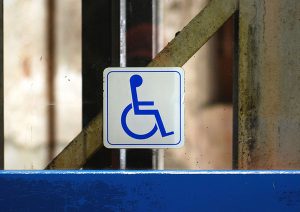
Should health providers be doing more to screen for fall risk in older adults? New research seems to indicate that fall screenings and risk prevention planning between providers and patients could save the health system millions of dollars, and possibly thousands of lives.
Falls cost the health system about $50 billion annually. It is a serious and growing public health issue, according to the study, “Medical Costs of Fatal and Nonfatal Falls in Older Adults,” by CDC researchers.
Methods for estimating the medical costs of falls vary because of different methods used to identify falls or fall injuries, the treatment facilities and populations included or the perspective from which costs are measured. But no matter how you tally the results, falls among those age 65 and older can result in serious injury, worsening mobility, loss of independence or even death. Preventive efforts which reduce the incidence of falls could lead to substantial reduction in health care spending.
As the population ages, both the number of falls and the costs to treat fall injuries are likely to rise, according to the study. One in four older adults reported falling in 2017, and more than 28,000 died as a result – that’s 74 people every day. More than 300,000 seniors are hospitalized annually just from fall-related hip fractures. The average hospital costs for fall-related injuries is $30,000, with costs tending to rise with a patient’s age.
The study calculated the costs of an estimated 29 million reported falls by older adults using 2015 Medicare Current Beneficiaries Survey (MCBS) and data from WISQARS. Researchers found that for nonfatal falls, Medicare paid approximately $28.9 billion, Medicaid $8.7 billion, and private or other payers $12.0 billion for nonfatal falls among those 65 and older. Overall medical spending for fatal falls was an estimated $754 million.
Based on U.S. Census Bureau projections of the older population in 2030 (when the last of the Baby Boomers turn 65), there will be an estimated 49 million falls that year, according to study co-author Gwen Bergen, Ph.D., a behavioral scientist in the division of unintentional injury prevention at the National Center for Injury Prevention and Control.
“We would expect these costs to surge unless more is not done for prevention,” Bergen said in a phone interview.
Despite many fall prevention initiatives, not enough health providers conduct fall assessments. For example, the CDC developed the Stopping Elderly Accidents, Deaths & Injuries initiative (STEADI) to help providers identify those at risk for falls and incorporate fall prevention into routine care. In Oregon and New York, clinical practices which use STEADI to screen 50 to 65 percent of their patients. That still leaves up to half of patients not assessed this way.
“Research shows that less than half of older adults talk to their provider about their fall risk,” Bergen added. “So there’s definitely a need for physicians to screen and follow through.”
Physicians often cite lack of time as a reason for not conducting falls prevention screenings. The CDC is working with health systems to adapt the program to the regular clinical flow and alert providers through electronic medical records.
Everyone wants to fix falls, and it is not that easy, said Barbara Resnick, Ph.D., a nurse practitioner and chair in gerontology at the University of Maryland School of Nursing, who was not involved in the study. “We have shown repeatedly that it takes a multi-modal intervention. You have to do more than one thing,” she said by phone. “There’s no one-size-fits all intervention. It requires individual approaches and individual goals and think about what will decrease that individual’s risk for falls.”
Perhaps even more important is maintaining physical activity to keep muscles strong. However, a significant challenge is motivation, said Resnick, a past president of the American Geriatrics Society and the Gerontological Society of America. “Only 30 percent of Americans do regular physical activity so why would we expect older adults, who may have a multitude of health problems, to engage?”
She works with older adults in assisted living and nursing homes, on “function-focused care.” This approach encourages people to do as much as they can for themselves, whether it is taking daily walks or just getting bathed and dressed without assistance.
“Staff may unwittingly encourage people to become de-conditioned by doing tasks for them, and that increases their risk for falls,” Resnick said.
Researchers concluded that practical lifestyle adjustments, evidence-based falls prevention programs, and clinical-community partnerships are critical to reducing the number of falls among older adults, thereby reducing future health costs.
The study was published in the March 7 edition of the Journal of the American Geriatrics Society.
Here are some questions for reporters to ask when reporting about this issue in their area:
- What local fall prevention programs are available in your community? Ask participants if they are helping; ask providers how frequently they conduct fall screenings.
- How many older adults went to the emergency department in the past year due to falls? What, if anything, is being done to address this problem, both in the community and in institutional settings?
Resources
- The Falls Free Initiative includes a coalition of over 70 national organizations charged with working toward the progress of one or more of the strategies in the National Coalition on Aging’s National Action Plan, which promotes the expansion and funding of falls risk screening, assessment and evidence-based programs.
- Check out this AHCJ tip sheet by Mark Taylor on reporting about the high cost of falling








